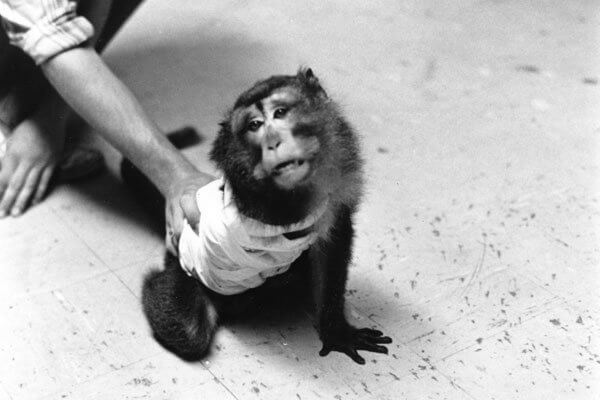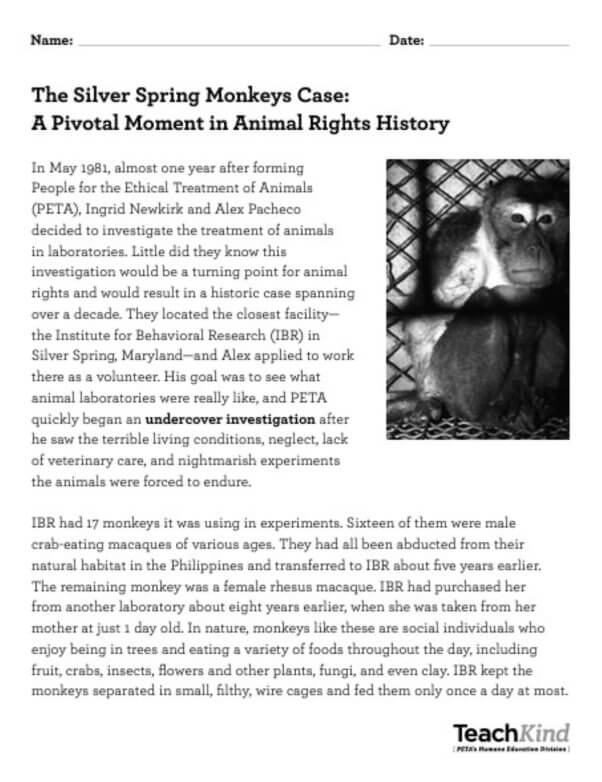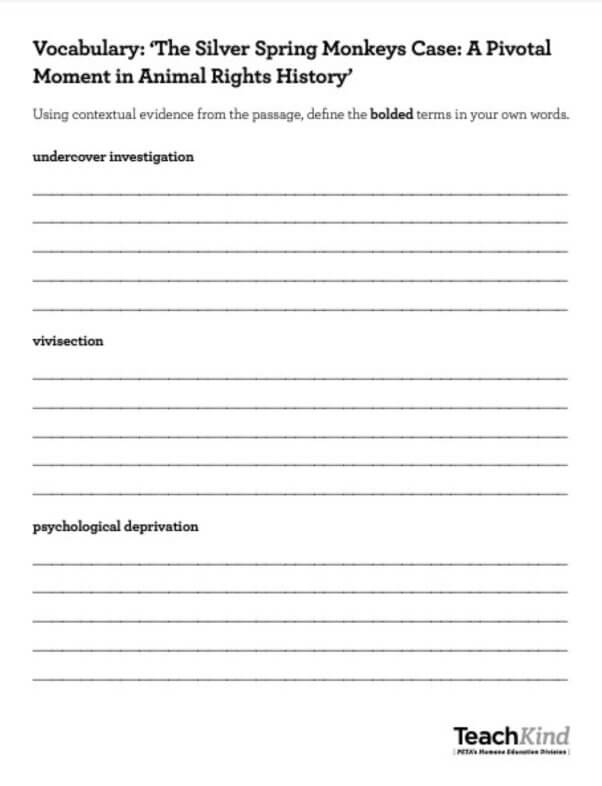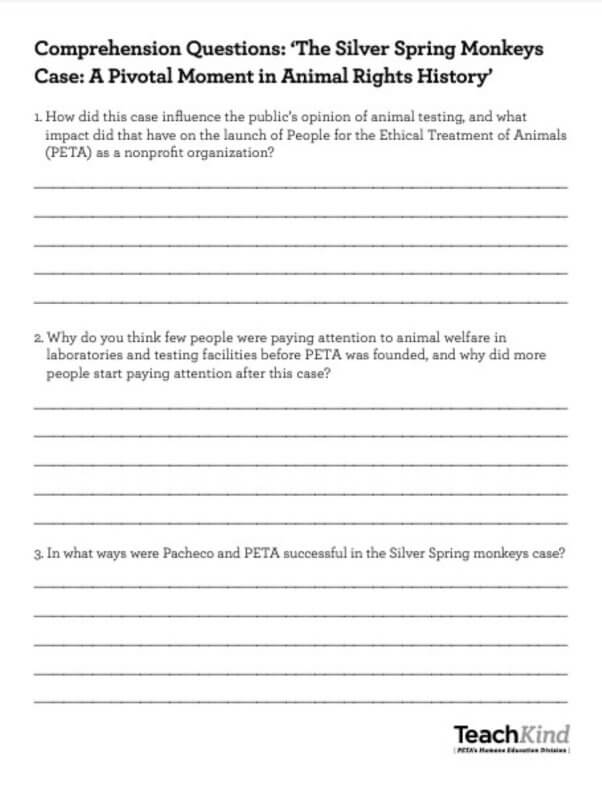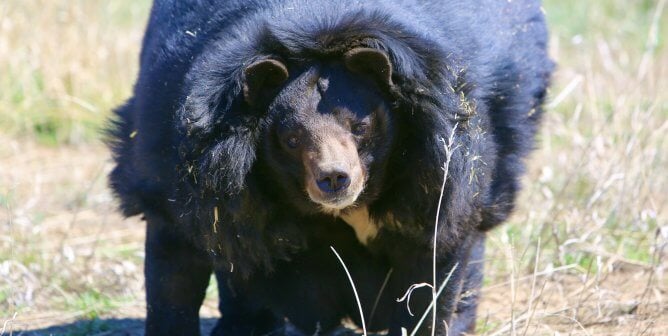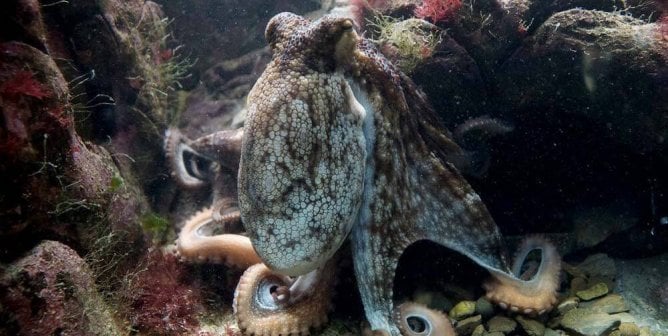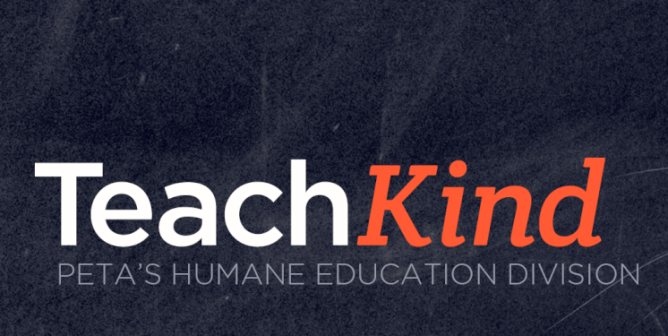The Silver Spring Monkeys: The Case That Made History for Animals (Grades 9–12)
Vivisection, more commonly known as animal testing or animal experimentation, has been a hot topic since PETA was first founded in 1980 to establish and defend the rights of all animals. The organization rallied its first supporters and gained momentum around a groundbreaking case that became known as the Silver Spring monkeys case because it exposed what was taking place at an animal testing facility in Silver Spring, Maryland, where a man with no medical training was experimenting on 17 monkeys. PETA stepped in, and over the course of a historic 10-year legal battle, one aspect of which made it all the way to the U.S. Supreme Court, helped secure the rescue of some of the monkeys. The case led to landmark additions to the federal Animal Welfare Act and won PETA the public’s support, expanding the budding nonprofit organization’s power and influence to achieve ever-greater change, including by persuading large corporations to end their testing on animals.
TeachKind has created this nonfiction reading comprehension worksheet to teach students about the historical significance of “the case that launched PETA” and inspire their compassion for animals used in experimentation. Animal experimentation is a topic of great concern among students, as revealed in the inquiries we receive from them year after year in relation to classroom assignments and projects. And a recent study confirmed that similar reading passages, which cultivate compassion for animals, helped students perform significantly better on Common Core–aligned assessments, demonstrating that instructional time need not be sacrificed to instill empathy in young people.
Students in grades 9–12 are sure to be on the edge of their seats as they read the shocking story of 17 monkeys who were snatched from their forest home and sold to laboratories, enduring unimaginable suffering before PETA exposed what was being done to them behind closed laboratory doors.
You can use this worksheet to address the following Common Core English language arts standards:
- Grades 9–10
- CCSS.ELA-LITERACY.RI.9-10.1 Cite strong and thorough textual evidence to support analysis of what the text says explicitly as well as inferences drawn from the text.
- CCSS.ELA-LITERACY.RH.9-10.3 Analyze in detail a series of events described in a text and determine whether earlier events caused later ones or simply preceded them.
- Grades 11–12
- ELA-LITERACY.RI.11-12.1 Cite strong and thorough textual evidence to support analysis of what the text says explicitly as well as inferences drawn from the text, including determining where the text leaves matters uncertain.
- ELA-LITERACY.RH.11-12.1 Cite specific textual evidence to support analysis of primary and secondary sources, connecting insights gained from specific details to an understanding of the text as a whole.
Looking for more ways to teach your students about the issues involved in using animals for experimentation? You can pair this worksheet with PETA’s new docuseries, The Failed Experiment. Available on Prime Video.

